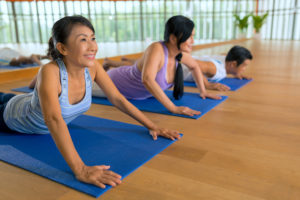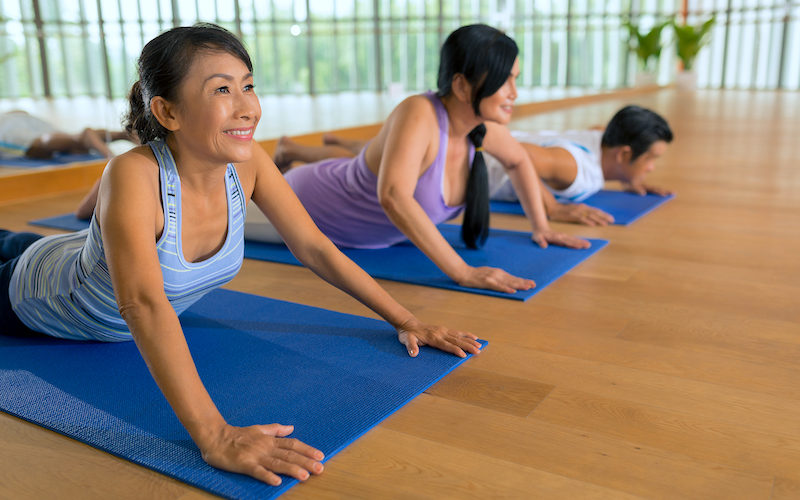
Balance and flexibility are key facets of physical fitness. Like endurance and strength, they diminish with age unless we work on them.
Working on balance and flexibility helps prevent falls, which can be disastrous. And just like it’s never too late to start working on them, it’s also never too soon. Anyone engaged in fitness should include stretching in his or her routine, whether beginning or experienced.
There’s a reason people have always talked about being “strong enough to bend,” you know.
Plus, stretching feels good. It lowers stress and improves posture and circulation. It helps us perform everyday activities, like bending over and turning our heads.
Talk to us if you have questions and check our schedule of classes to see what might be right for you. Here are some common offerings that are safe, low impact, and effective.
Yoga
Almost 40 million Americans enjoy yoga, according to the 2016 Yoga in America Study. About one-fifth are in their 50s, and another one-fifth are over 60.
Yoga is great for balance, strength and bone density. It helps with back pain, blood pressure and anxiety. The focus on breathing benefits the mind, body and spirit. You don’t need any special equipment, and you can do it anywhere, although we recommend a few classes to start.
And a super-important fact: Yoga is highly adaptable to everyone’s physical needs and limitations. Let your instructor know about any aches, arthritis, surgeries, etc. – and he or she will guide you to a modification.
Pilates
Pilates focuses on the core muscles. It is somewhat similar to yoga, but it foregoes the meditative or metaphysical aspects. It provides a safe, low-impact workout that often involves working on a mat on the floor.
Also like yoga, Pilates generally moves at a gentle, deliberate pace and focuses on proper form and breathing. It can build strength, reduce back pain, and improve posture, coordination and balance.
Pilates focuses on building strength in the core muscles, or the “powerhouse” of the legs, abdominals, arms, hips and back.
Tai chi
The slow, gentle movements of tai chi (pronounced TIE CHEE) have been practiced in China for thousands of years, and today by millions of people around the world.
The ancient martial art is sometimes called “meditation in motion.” And remembering the steps and their sequence is good for brain health and focus.
Studies show tai chi helps people with arthritis and Parkinson’s disease, as well as stress management, muscle tone, lower blood pressure and other aspects of good health. It’s also one of the best things we can do to improve our balance while standing still and also while moving. In other words, tai chi is great for preventing falls.
Whether here or at home with a book or video, please stretch – at least 15 minutes a day, three times a week.
Holly Kouvo is a personal trainer, functional aging specialist, senior fitness specialist, brain health trainer, writer, and speaker.

